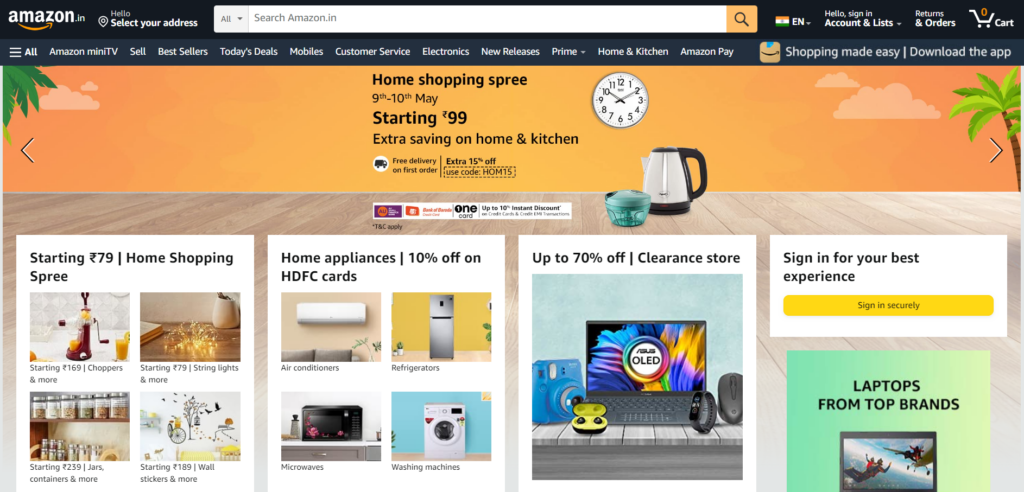
Key Takeaways
- eCommerce customer segmentation tailors online shopping experiences based on preferences and characteristics.
- Segmentation enhances marketing by targeting behavior, increasing engagement, and fostering loyalty.
- Unique strategies are employed for different customer groups, catering to specific interests.
Regarding eCommerce marketing, a one-size-fits-all approach won’t cut it.
With so many customers with different preferences and needs, businesses need to tailor their marketing efforts to specific groups of customers.
That’s where eCommerce customer segmentation comes in.
Businesses can create highly targeted marketing campaigns that speak directly to each group’s unique needs and interests by dividing customers into distinct groups based on shared characteristics.
In this way, customer segmentation can be a powerful tool for driving engagement, loyalty, and sales.
In this article, we’ll take a closer look at the role of customer segmentation in successful eCommerce marketing, including best practices, challenges, and real-world examples.
What do you mean by eCommerce customer segmentation?
eCommerce customer segmentation is like crafting a personalized shopping experience, tailored just for you.
Imagine a store that knows exactly what you love – your favorite colors, styles, and interests. Well, eCommerce segmentation makes that happen in the online world.
It’s like sorting shoppers into different groups based on their preferences, behaviors, and characteristics.
Think of it as a way to treat different customers in unique ways. For instance, if you’re a tech-savvy gadget enthusiast, you might see ads for the latest gadgets that catch your eye.
On the other hand, if you’re a fashion-forward trendsetter, you’d receive recommendations for stylish outfits that match your taste.
This smart sorting helps businesses send the right messages to the right people, at the right time.
It’s all about making your online shopping journey feel like a one-of-a-kind adventure, where everything you see is handpicked just for you.
So, when you see those suggestions that make you go, “Hey, that’s exactly what I wanted!” – that’s the magic of eCommerce customer segmentation at work.
Benefits of eCommerce customer segmentation

There are several benefits of customer segmentation in eCommerce marketing, including:
1. Helps to understand customer behavior
Customer segmentation enables businesses to identify and analyze the behavior of different customer groups.
By understanding their needs, preferences, and behavior patterns, businesses can tailor their marketing efforts to each segment.
It helps to increase the likelihood of converting leads into loyal customers.
2. Increases relevance and personalization
With customer segmentation, businesses can deliver highly targeted and personalized marketing campaigns that speak directly to each customer group’s unique needs and interests.
By providing customers with relevant and personalized content, businesses can improve engagement and build stronger relationships with their audience.
3. Enables targeted marketing campaigns
By dividing customers into smaller groups based on their characteristics, businesses can create highly targeted marketing campaigns that are more likely to resonate with each group.
This, in turn, can lead to increased conversions and higher ROI.
4. Improves customer satisfaction and loyalty
When customers feel understood and valued, they are more likely to become repeat customers and recommend a business to others.
Customer segmentation enables businesses to understand their customers better.
It creates more meaningful interactions, ultimately improving customer satisfaction and loyalty.
5. Maximizes return on investment (ROI)
By delivering more relevant and personalized marketing campaigns, businesses can increase their chances of converting leads into customers and boost their ROI.
Customer segmentation enables businesses to focus on the most profitable customer groups.
It also ensures that they get the most value for their marketing spend.
Types of eCommerce customer segmentation

eCommerce customer segmentation is a powerful tool to create personalized marketing campaigns that resonate with their customers.
There are several types of customer segmentation that can be leveraged to gain valuable insights into customer behavior and preferences.
1. Demographic segmentation
One type of customer segmentation is demographic segmentation, which involves dividing customers into groups based on demographic characteristics such as age, gender, income, education, and occupation.
For example, an online retailer might segment their customer base by age and gender, creating targeted campaigns for different age groups or genders.
By understanding the demographic makeup of their customer base, businesses can tailor their marketing efforts to specific groups and create targeted campaigns that appeal to their unique needs and preferences.
2. Geographic segmentation
Another type of customer segmentation is geographic segmentation, which involves dividing customers into groups based on their geographic location.
For example, an eCommerce business might create campaigns specific to different regions, such as targeting customers in urban areas with products tailored to their lifestyle or offering promotions to customers in rural areas who might be more price-sensitive.
Businesses can better understand local market trends and adapt their marketing strategies to specific customer needs by tailoring marketing efforts to particular regions.
3. Psychographic segmentation
Psychographic segmentation is another powerful way to understand customer motivations and preferences.
This involves dividing customers into groups based on their personality traits, values, attitudes, and lifestyles.
For example, a travel company offering WWII tours might segment customers by their travel preferences and create targeted campaigns promoting a Band of Brothers tour to appeal to specific groups, such as adventure-seekers or history buffs.
By utilizing travel software development services, travel companies can further refine customer segmentation strategies to provide highly personalized experiences that resonate with niche audiences.
By understanding the psychographic makeup of their customers, businesses can create marketing campaigns that resonate with their values and beliefs.
4. Behavioral segmentation
Finally, behavioral segmentation involves dividing customers into groups based on their behavior, such as purchase history, frequency of purchases, and engagement with marketing campaigns.
For example, an eCommerce business might create targeted campaigns for customers who have abandoned their shopping carts, offering them a discount to complete their purchase.
By understanding customer behavior, businesses can identify opportunities to upsell or cross-sell products and improve customer retention.
Best practices for customer segmentation in eCommerce marketing
Customer segmentation is an essential tool for eCommerce businesses to deliver personalized experiences that resonate with customers.
To effectively leverage customer segmentation in eCommerce marketing, businesses should follow best practices that align with their goals and audience.
Here are some best practices that businesses can use to optimize their customer segmentation strategy:
1. Utilize customer segmentation tools
Businesses should leverage customer segmentation tools to collect and analyze customer data effectively.
It can help them segment customers based on various criteria, such as demographics, behavior, and interests.
AI customer segmentation software can help businesses identify key customer segments quickly and make data-driven decisions that optimize marketing campaigns.
2. Identify the benefits of customer segmentation
Customer segmentation helps businesses understand their customers’ needs, preferences, and behaviors, which can improve the effectiveness of marketing campaigns and boost customer retention.
By identifying the benefits of customer segmentation, businesses can clearly understand why it is essential and how it can drive success in eCommerce marketing.
3. Implement real-time customer segmentation
Real-time customer segmentation involves using real-time data to segment customers on the fly, which can improve the relevance and timeliness of marketing campaigns.
Businesses can deliver personalized experiences tailored to each customer’s needs and interests by leveraging real-time customer segmentation.
4. Use marketing segmentation for customer retention
Marketing segmentation can be used to identify key customer segments that are at risk of churn and create targeted retention campaigns that keep customers engaged and loyal.
By understanding the behaviors and preferences of at-risk customers, businesses can develop campaigns that deliver personalized experiences that resonate with them and keep them coming back.
5. Incorporate customer segmentation in eCommerce
Customer segmentation benefits eCommerce, where businesses can tailor their marketing efforts based on customer behavior and preferences.
By segmenting customers based on purchase history, product preferences, and engagement, businesses can develop campaigns that are more likely to convert and drive sales.
6. Collect and analyze customer data
Businesses should leverage customer segmentation tools to effectively segment customers to collect and analyze relevant data, including demographics, purchase history, and behavioral data.
This data can be collected through various channels, such as website analytics, social media, and customer surveys.
By leveraging real-time customer segmentation, businesses can better understand customer needs and preferences and tailor their marketing efforts accordingly.
Case studies of customer segmentation
Customer segmentation has proven a powerful tool for eCommerce businesses looking to improve their marketing efforts.
To see the benefits of customer segmentation in action, we can look at some real-life case studies of successful eCommerce marketing campaigns:
1. Amazon

Amazon, the world’s largest online retailer, is a prime example of how effective customer segmentation can be.
Amazon uses customer data to personalize product recommendations and marketing campaigns, a critical factor in its success.
By analyzing customer behavior and purchase history, Amazon can make highly relevant product recommendations and create targeted marketing campaigns that drive sales.
2. Netflix

The popular streaming platform Netflix also uses customer segmentation to create highly personalized recommendations and marketing campaigns.
By analyzing customer viewing history and behavior, Netflix can suggest highly relevant and engaging content for each customer.
This has helped Netflix become one of the most successful companies in the entertainment industry.
3. Sephora

Another eCommerce giant that has successfully leveraged customer segmentation is Sephora, the beauty and cosmetics retailer.
Sephora uses customer segmentation to create targeted marketing campaigns that drive customer engagement and loyalty.
Sephora can create personalized email campaigns, social media ads, and product recommendations that resonate with each customer by analyzing customer behavior and preferences.
This has helped Sephora create a loyal customer base and drive sales.
These case studies show that customer segmentation is a powerful tool for eCommerce businesses looking to improve their marketing efforts.
Businesses can drive customer engagement, loyalty, and sales by collecting and analyzing customer data, identifying key customer segments, and creating targeted marketing campaigns.
Challenges of eCommerce customer segmentation
Although eCommerce customer segmentation can yield impressive results, it also poses several challenges, including:
1. Data privacy concerns
Collecting and using customer data can be a double-edged sword, as it can simultaneously fuel marketing efforts while raising privacy concerns and eroding trust.
Customers are more conscious than ever of data protection, and eCommerce businesses must be transparent about how they collect and use customer data.
In addition, they should comply with relevant data protection laws to avoid legal consequences.
2. Limited resources
To implement customer segmentation effectively, businesses must invest in resources such as time, money, and personnel.
This can be particularly challenging for small businesses, which may need help to justify the expense of customer segmentation tools and strategies.
However, investing in eCommerce customer segmentation can ultimately pay off by improving marketing efforts and increasing customer loyalty.
3. Difficulty in identifying and analyzing customer behavior
Analyzing customer behavior is an essential aspect of eCommerce segmentation but can also be challenging.
Access to relevant data and interpreting it effectively are crucial for success.
Businesses may need to invest in data analytics tools or hire data analysts to maximize customer segmentation.
For businesses with limited budgets, considering international PEO service providers can offer cost-effective solutions for hiring.
However, once a business has overcome these challenges, it can reap the rewards of more effective marketing and better customer engagement.
Conclusion
Customer segmentation is a crucial component of successful eCommerce marketing.
By collecting and analyzing customer data, businesses can identify key customer segments, create targeted marketing campaigns, and drive sales and customer loyalty.
While there are challenges to implementing customer segmentation, businesses that invest in this strategy can see significant returns.
With the help of eCommerce customer segmentation tools and personalized marketing tactics, businesses can engage with customers on a deeper level.
So, if you’re looking to take your eCommerce marketing strategy to the next level, consider the power of customer segmentation and the many benefits it can bring to your business.
